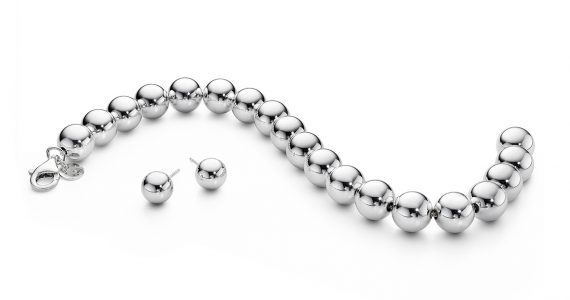A new study has discovered a super hard titanium-gold alloy that is now the hardest known metallic substance, even harder than titanium. This alloy was discovered by physicists from Rice University, and it has been found to be about 3-4 times harder than most steels.
The lead physicist of the study is Prof. Emilia Morosan, who is a professor of physics, astronomy, chemistry, materials science, and nanoengineering at Houston’s Rice University. Her team was the one who made the discovery while they were working on unconventional magnets that happened to be made from titanium and gold.
Morosan confirmed that what they discovered is “four times harder than pure titanium, which is what’s currently being used in most dental implants and replacement joints.” She specializes in the design and synthesis of compounds that have exotic properties, and according to her, the compound is actually not difficult to make. It’s also not a new material, because it’s simply an alloy of titanium and gold.
The Road to Discovery
While the titanium-gold alloy is technically not new and they weren’t the first to work with this material, Morosan and her team were the first to document its properties fully.
The whole study began from Morosan’s core research. According to her, “We published a study not long ago on titanium-gold, a 1-to-1 ratio compound that was a magnetic material made from nonmagnetic elements. One of the things that we do when we make a new compound is try to grind it into powder for X-ray purposes. This helps with identifying the composition, the purity, the crystal structure and other structural properties. When we tried to grind up titanium-gold, we couldn’t. I even bought a diamond (coated) mortar and pestle, and we still couldn’t grind it up.”
The study’s lead co-author is Eteri Svanidze, former Rice University graduate student. After they couldn’t grind up the alloy, Morosan and Svanidze did some follow-up tests, with the goal of determining the compound’s exact hardness. They measured this as well as the other titanium-gold compositions that they had used as in the original study.
One of the compounds that they ended up testing was a mixture that was prepared at a relatively high temperature. This mixture was made of three parts titanium and one part gold. At that time, the team didn’t realize that making this produces an almost pure crystalline form beta titanium-3-gold. It is this cubic crystal structure that makes it four times harder than titanium.
Measuring the hardness of this crystal’s beta form was done by Morosan and Svanidze’s team, in conjuction with the National High Magnetic Field Laboratory at Florida State University and the Texas A&M University’s Turbomachinery Laboratory.
Aside from just hardness, they also did comparisons on biocompatibility and resistance to wearing. Gold and titanium by themselves are some of the most biocompatible metals that have a lot of uses in the medical field (such as medical implants). Thanks to tests done by colleagues at the University of Texas MD Anderson Cancer Center in Houston, they found that this new titanium-gold alloy was even more biocompatible than pure titanium.
The Importance of Titanium
The discovery of this lab-made metal that’s four times harder than pure titanium is groundbreaking because of titanium’s importance. For one, titanium is one of the very few metals that the human bone can grow around firmly. This is why titanium is widely used in the fields of medicine as well as dentistry.
In medicine, titanium is the leading material used for artificial knee and hip joints. This is because titanium is very strong, durable, non-toxic, and wear-resistant. While it is useful in making conventional knee and hip implants, these have to be replaced after around 10 years because of wear and tear.
The alloy is very easy to make and has amazing durability, so this discovery could potentially mean that we now have a material that can make significantly longer-lasting medical and dental implants. Prof. Morosan confirms that the hardness and biocompatibility of this new titanium-gold alloy makes it a “next generation compound for substantively extending the lifetime of dental implants and replacement joints.”
While this discovery is definitely great news and can potentially move mountains in the medical field, the researchers fully intend to conduct further studies and tests. They want to investigate the structure of this alloy further, so that they could improve on its hardness.
Finding out more about this alloy will definitely be for the good of everyone, given its potential. In fact, aside from uses in the medical and dental field, it may also have applications in other industries, including engineering parts, drilling, and sporting equipment, among others.
If you want to check out the full details of the study, you may read the journal Science Advances.








